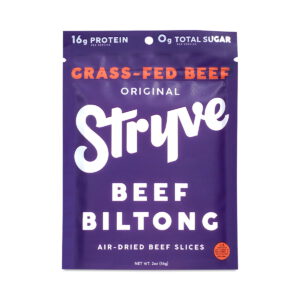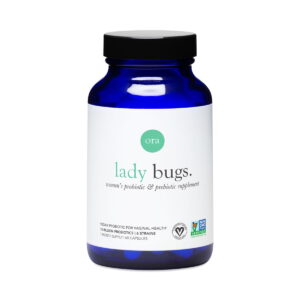- Healthy Organic Meatball Dinners
- Nutritional Benefits of Organic Meatballs
- Choosing the Right Ingredients
- Delicious Meatball Recipes
- Creative Sides to Complement Meatballs
- Meal Prep Tips for Busy Families
- Storing and Reheating Leftovers
When it comes to grocery shopping for healthy organic meatball dinners, preparation and knowledge are key. Keeping track of what you buy not only aids in maintaining a nutritious diet but can also save you money and time. Here are some practical tips to make your grocery shopping experience both enjoyable and efficient.
Start with a List: Before heading to the store, create a shopping list that includes all the ingredients you need for your meals. This will help you avoid impulse purchases and ensure that you only buy what is necessary for your healthy organic recipes.
Buy Local: Whenever possible, opt for local produce and meats. Searching for farmers’ markets or local butchers can lead you to fresh, organic options that support your community. Local foods often come with a lower carbon footprint and are more nutrient-dense as they are fresher.
Focus on Organic: When shopping for meatballs, selecting organic meats can significantly impact your health. Look for grass-fed beef, free-range chicken, or organic turkey—these often contain higher protein levels and lower levels of unwanted chemicals compared to conventionally raised meats. Check for certifications such as USDA Organic to ensure quality.
Go Plant-Based: For those interested in vegan options, many delicious plant-based proteins can replace traditional meat in meatballs. Options like lentils, chickpeas, or jackfruit are excellent protein sources and can create nutritious vegan meatballs. Ensure that these ingredients are also organic to maximize health benefits.
Check for Safety: Always inspect the packaging of meats and other perishable goods. Look for any signs of damage or spoilage, as these could signal unsafe products. When shopping online, use reputable grocery delivery services that provide clear information about ingredient sourcing and quality to avoid compromising food safety.
Budget Wisely: To keep your grocery bills in check, consider bulk-buying items such as whole grains, canned beans, and frozen vegetables. These ingredients are not only affordable but can also be the backbone of various healthy meals. Paying attention to sales and using coupons can also further decrease your costs.
Lastly, don’t shy away from talking to the staff at your local grocery store or market; they can often provide insights on the freshest products available and any upcoming sales that could benefit your meal planning.
Nutritional Benefits of Organic Meatballs
Organic meatballs offer a range of nutritional benefits that can enhance your diet in various ways. They not only serve as a flavorful addition to many dishes but also come packed with wholesome nutrients that can support overall health. A significant advantage of choosing organic meatballs over conventional alternatives is their enhanced nutrient profile, which is a result of how the animals are raised and what they are fed.
One of the primary benefits of organic meat is the absence of antibiotics and hormones, which are often used in conventional farming practices. This results in a cleaner protein source, minimizing the risk of antibiotic resistance in consumers. Moreover, organic livestock is generally raised on a more natural diet, contributing to healthier nutrient levels in the meat. For instance, grass-fed beef is known to have higher levels of omega-3 fatty acids, antioxidants, and vitamins compared to grain-fed counterparts.
Here’s a comparison of the nutritional benefits of organic versus conventional meatballs:
| Nutrient | Organic Meatballs | Conventional Meatballs |
|---|---|---|
| Protein | Higher quality due to natural feeding practices | Standard quality |
| Omega-3 Fatty Acids | Higher levels, especially in grass-fed options | Lower levels |
| Vitamins and Minerals | Increased levels of vitamins A, D, and E | Standard mineral content |
| Antibiotics and Hormones | Free from antibiotics and added hormones | May contain residues of antibiotics and hormones |
| Chemical Additives | No preservatives or artificial ingredients | Potentially contains artificial additives |
In addition to these benefits, organic meatballs can be part of a balanced diet, providing the necessary proteins alongside essential amino acids that contribute to muscle repair and overall body function. For those focusing on a high-protein meal plan, incorporating organic meatballs can fulfill not only protein requirements but also come with less fat, specifically when choosing leaner meat options.
Moreover, other ingredients in organic meatballs such as herbs, spices, and vegetables commonly added can bring additional health benefits. Ingredients like parsley, garlic, and onion are rich in vital nutrients and antioxidants, which can boost the immune system and enhance flavor without the need for unhealthy additives.
Choosing organic meatballs is an excellent way to incorporate healthful elements into your diet while enjoying delicious meals. Whether paired with healthy sides or used as a centerpiece in various organic recipes, they undoubtedly elevate the nutritional value of any dish, making them a smart choice for health-conscious families.
Choosing the Right Ingredients

When it comes to creating flavorful and healthy meatball dinners, the ingredients you choose are paramount. Understanding the differences in product quality and nutritional value can empower you to make smart shopping decisions, ensuring that every meal is both delicious and nourishing.
Opt for Whole Foods: Aim to include minimally processed ingredients in your meatball recipes. Fresh vegetables, whole grains for binding agents, and natural spices not only add flavor but also enhance the nutritional profile of your dishes. Items like quinoa, brown rice, or oats are excellent, wholesome alternatives to breadcrumbs, providing added fiber and nutrients.
Read Labels Carefully: Whether you are purchasing fresh or packaged items, get into the habit of reading labels. For meat—it’s crucial to look for terms like “organic,” “grass-fed,” or “free-range.” For other ingredients, keep an eye out for preservatives, artificial colors, and added sugars, which can detract from the health benefits of your meals. Try to choose products that have a short ingredient list with recognizable terms.
Organic Herbs and Spices: Don’t underestimate the power of herbs and spices in your meatball recipes. They not only elevate flavor but also offer health benefits. Opt for organic options to avoid any pesticide residues. For example, basil, oregano, and rosemary can enhance the taste of your meatballs while providing antioxidant properties, making your protein meals even healthier.
Frozen and Canned Options: For busy families and professionals, utilizing frozen vegetables or canned legumes can save time while still offering nutritious elements. Frozen veggies retain most of their nutrients because they are picked at peak freshness and flash-frozen. Canned beans, when rinsed, are a convenient way to add protein to your meatballs, especially in plant-based versions.
Safety First: Food safety is an essential aspect of choosing the right ingredients. When shopping for meats, ensure they are properly refrigerated or frozen and check the expiration dates. If shopping online, choose stores with good customer reviews concerning their handling and shipping practices. Make sure your chosen delivery service uses insulated packaging to keep items fresh during transport.
Seasonal and Affordable: Shopping for seasonal produce not only supports your local economy but also provides options at lower prices. Seasonal fruits and vegetables tend to be fresher, tastier, and more nutrient-rich compared to out-of-season selections. Items like zucchini, bell peppers, and tomatoes work beautifully in meatball recipes and are usually budget-friendly when in season.
Plan for Versatility: When selecting your ingredients, think about versatility. Choose items that can be utilized in various recipes throughout the week. For instance, if you buy a family pack of ground turkey, you can use it to make meatballs one night, and then turn it into a stir-fry or casserole later. This approach maximizes your grocery budget while minimizing food waste.
Ultimately, the right ingredients can transform your meatball meals into wholesome, flavorful experiences that your entire family will enjoy. Incorporating organic options and understanding food safety will not only contribute to a healthier lifestyle but also bring excitement to your dinner table.
Delicious Meatball Recipes
One of the most enjoyable aspects of cooking is experimenting with different recipes that showcase the delightful versatility of meatballs. From the classic Italian style to inventive global flavors, you can explore a variety of delicious options that cater to diverse palates.
Start with a traditional Italian meatball recipe. Use high-quality organic ground beef or turkey, mixed with breadcrumbs made from whole grain, grated Parmesan cheese, chopped parsley, garlic, and eggs to bind them together. Season with salt, pepper, and Italian herbs like oregano and basil. Bake in the oven for a healthier cooking method that reduces fat compared to frying. Serve these meatballs with a homemade marinara sauce and whole grain spaghetti or zucchini noodles for a wholesome dinner that delights the senses.
For a twist on the classic, consider creating Mediterranean-style meatballs. Combine ground lamb or chicken with finely chopped spinach, feta cheese, garlic, and a dash of cumin. The unique flavor profile of these meatballs pairs excellently with a yogurt-based tzatziki sauce and a side of tabbouleh salad made from organic parsley, tomatoes, and bulgur wheat. This dish not only offers bold flavors but also provides a refreshing and nutritious option for those seeking a lighter meal.
If you’re looking for plant-based alternatives, lentil meatballs are an excellent choice that delivers both flavor and nutrition. Cooked lentils, combined with oats, grated carrots, chopped onions, and various spices, create a savory meatball base. Bake or sauté them for a crusty exterior, and serve with a tangy tomato sauce over quinoa or brown rice. This recipe is not only rich in protein but also filled with dietary fiber, making it satisfying and healthful.
For those who crave a taste of Asia, try Asian-inspired meatballs featuring ginger, garlic, and green onions mixed with ground turkey or chicken. Add soy sauce and sesame oil for an umami burst. Skewer and grill these meatballs for a smoky flavor, then serve with steamed jasmine rice and stir-fried vegetables. This wonderful twist brings a delightful fusion of aromas and textures to your dinner table.
Each of these recipes highlights the incredible adaptability of meatballs while ensuring that the ingredients are wholesome and organic. Experimenting with various spices and ingredients not only enhances the flavors, but it can also make your protein meals more exciting and nutritious. The key is to remain inventive and open to combining healthy choices in ways that surprise and satisfy your family’s taste buds.
“Cooking is like love. It should be entered into with abandon or not at all.” – Julia Child
Incorporating different global influences or health-conscious tweaks into your meatball recipes can turn a simple dinner into an extraordinary culinary experience. By embracing creativity and flavor, you can create dishes that your whole family will look forward to, transforming mealtime into an adventure of taste and nutrition.
Creative Sides to Complement Meatballs
 Providing delightful and nutritious sides to accompany your organic meatball dinners expands the meal experience, enhancing both flavor and nutrient balance. The right sides can elevate your meatballs from a simple dish to a complete feast, allowing you to explore the diversity of flavors and textures that complement your protein meals. Consider starting with a colorful salad featuring seasonal vegetables. A mix of leafy greens—like spinach or arugula—tossed with cherry tomatoes, cucumbers, and a light vinaigrette can refresh your palate and add a vibrant, crunchy contrast to your succulent meatballs. Adding nuts or seeds can increase the protein content and make the salad even more satisfying.
Providing delightful and nutritious sides to accompany your organic meatball dinners expands the meal experience, enhancing both flavor and nutrient balance. The right sides can elevate your meatballs from a simple dish to a complete feast, allowing you to explore the diversity of flavors and textures that complement your protein meals. Consider starting with a colorful salad featuring seasonal vegetables. A mix of leafy greens—like spinach or arugula—tossed with cherry tomatoes, cucumbers, and a light vinaigrette can refresh your palate and add a vibrant, crunchy contrast to your succulent meatballs. Adding nuts or seeds can increase the protein content and make the salad even more satisfying.
Another exciting option is to serve roasted vegetables alongside your meatballs. Seasonal veggies such as carrots, bell peppers, or Brussels sprouts can be tossed with olive oil, herbs, and spices, then roasted to bring out their natural sweetness and create a caramelized exterior. This delightful side not only complements the savory flavors of your meatballs but also adds nutritional diversity to your meal.
For those craving comfort food, consider pairing your meatballs with a hearty whole grain like quinoa, brown rice, or farro. These grains serve as a nutritious base that can absorb delicious sauces, while providing added fiber and complex carbohydrates, making the meal more filling and energizing. You can further jazz up these grains with fresh herbs, lemon zest, or sautéed garlic to incorporate layers of flavor.
Don’t forget about the classics: a rich and creamy mashed potato or sweet potato can also make a comforting side. Using organic ingredients ensures that this indulgence remains a healthful choice, and adding in some roasted garlic or chives can enhance the dish’s creativity and zest.
In terms of dips or sauces, consider a simple yet delicious homemade tzatziki or marinara sauce to dip your meatballs in. These not only enhance flavor but can also provide additional nutritional benefits, depending on the ingredients used. Tzatziki, made with Greek yogurt, cucumbers, and herbs, is refreshing and offers probiotics that contribute to gut health, while marinara can be packed with antioxidants if prepared using fresh tomatoes and herbs.
Experimenting with various sides not only brings creativity to your dining table but encourages exploration of new tastes and ingredients. Each time you prepare organic meatballs, challenge yourself by trying out different combinations of sides. This appeal to diversity in your meals can provoke a thirst for knowledge about nutrition, cooking techniques, and international cuisines. Discover how expanding your repertoire of side dishes can enrich your family’s dining experience and elevate the healthiness of your dinners.
- What are the best sides to serve with meatballs?
- Popular sides include vibrant salads, roasted vegetables, hearty grains like quinoa or brown rice, and creamy mashed potatoes. Each of these options brings out the flavors of the meatballs while providing a nutritious balance to the meal.
- Can I make meatballs in advance?
- Yes, you can prepare meatballs in advance and store them in the refrigerator for a couple of days or freeze them for longer storage. This allows for quick meal options during busy weeks while maintaining the quality and flavor of your dishes.
- Are there gluten-free options for meatball recipes?
- Absolutely! You can substitute breadcrumbs with gluten-free options such as almond flour, ground oats, or gluten-free breadcrumbs. Additionally, using lentils or beans as a base for your meatballs can provide a gluten-free and nutritious alternative.
- How do I ensure my meatballs stay moist when cooking?
- To keep meatballs moist, be sure not to overmix the meat and ingredients. Adding ingredients like grated vegetables or a splash of broth can also help maintain moisture during cooking.
- Is it healthy to eat meatballs regularly?
- When made with organic quality ingredients and paired with nutritious sides, meatballs can certainly be part of a healthy diet. Balance is key, so vary the types of proteins and recipes to ensure you’re getting a range of nutrients.
- What are some creative dips for meatballs?
- Consider serving meatballs with homemade dips like tzatziki, marinara, or a spicy sriracha mayo. Each dip can complement the flavors of your meatballs and introduce new taste experiences to your meals.
- Can meatballs be made vegan?
- Yes, vegan meatballs can be made using plant-based ingredients such as lentils, chickpeas, or mushrooms combined with oats or quinoa. These alternatives provide both flavor and protein without any animal products.
Meal Prep Tips for Busy Families
Meal prepping is a lifesaver for busy families looking to maintain a healthy lifestyle without sacrificing flavor. By planning ahead, you can streamline your cooking process and ensure nutritious organic meals take center stage on your dinner table. Here are some practical tips to enhance your meal prep experience and keep your family satisfied with diverse and delicious protein meals.
Batch Cooking: Choose a day of the week to batch-cook your meatballs and complementary dishes. This not only saves time but also keeps meal options varied throughout the week. Prepare a large batch of your favorite organic meatball recipe, then portion them into containers. Pair each portion with sides such as quinoa or roasted veggies, making it easy to grab a wholesome meal on busy nights.
Versatility is Key: When meal prepping, opt for ingredients that can be used across multiple recipes. For instance, if you make a large batch of lentil meatballs, consider pairing them with spaghetti on one night and stuffing them into a whole-grain pita with salad for lunch the next day. This way, you’ll enjoy different flavor profiles while minimizing waste and maximizing your grocery investment.
Create an Assembly Line: Setting up an assembly line in your kitchen can make the prep work more efficient and enjoyable. Arrange your ingredients by task—one area for mixing, another for shaping meatballs, and a cooking station. This technique lets you streamline your process and promotes efficiency, so you can whip up a variety of meals in no time.
Utilize Freezer-Friendly Recipes: Many organic meatball recipes freeze exceptionally well. Prepare and cook your meatballs ahead of time, then allow them to cool before transferring them to airtight freezer bags. When you’re ready to enjoy them, simply thaw in the fridge overnight and heat through. This technique is a game changer for busy weeknights when time is of the essence.
Embrace Leftovers: Don’t shy away from using leftovers creatively. For example, Tuesday’s tasty meatballs could become a filling for Wednesday’s whole-grain wraps, or they could be chopped up and tossed into a salad for an easy protein boost. Embracing leftovers not only saves food but also opens up new meal possibilities without much effort.
Stay Organized: Use clear labels for all your meal prep containers, indicating the contents and the date they were prepared. This ensures that you always know what’s available and helps prevent food waste. When you can see your meals, you’re more likely to eat what you’ve prepared, maintaining your healthy eating habits.
Prep Snack Ideas: Don’t forget about healthy snacks! Include some organic veggie sticks, hummus, or fruit cups alongside your main meals. Snack prep is just as important as meal prep, providing quick, nutritious options that your family can grab in between meals, keeping hunger at bay while sticking to healthy choices.
By incorporating these meal prep tips into your routine, busy families can enjoy quick, healthy protein meals that cater to everyone’s taste preferences. Ditch the last-minute takeout and embrace the ease of home-cooked organic recipes filled with flavor and nutrition.
Storing and Reheating Leftovers
When it comes to enjoying delicious leftovers, proper storage and reheating techniques can make all the difference. Whether you’re dealing with mouthwatering meatballs or a hearty protein meal, these tips will help you maintain their freshness and flavor, ensuring that your organic recipes are just as delightful the second time around.
Cool Before Storing: Before packing up your leftover meatballs, allow them to cool at room temperature for about 30 minutes. This step helps prevent condensation in your storage containers that can lead to sogginess. Once cooled, transfer them to airtight containers, making sure to separate layers with parchment paper if you’re stacking. For an extra touch of organization, label the containers with the date to keep track of freshness.
Refrigerate or Freeze: If you plan to consume your leftovers within a few days, store them in the refrigerator where they can last up to three days. For longer storage, freezing is your best option. Meatballs tend to freeze well; wrap them tightly in plastic wrap or place them in freezer-safe containers to avoid freezer burn. They can generally last for up to three months in the freezer, making them an excellent choice for meal prep.
Safe Thawing Methods: When it’s time to enjoy those frozen meatballs, never thaw them at room temperature, as this can lead to bacterial growth. Instead, opt for one of these safe methods:
- Refrigerator Thawing: Place the frozen meatballs in the refrigerator overnight to thaw gradually.
- Cold Water Thawing: Seal the meatballs in a waterproof bag and submerge them in cold water for a quicker thawing option, changing the water every 30 minutes.
- Microwave Thawing: If you’re pressed for time, use the microwave on the defrost setting, but be aware that this may affect the texture slightly.
Reheating Techniques: Once thawed, look forward to reheating your meatballs without compromising flavor or texture:
- Stovetop: Heat a little olive oil in a pan and warm your meatballs over medium heat, turning occasionally to achieve an even heat.
- Oven: Preheat your oven to 350°F and place the meatballs on a baking sheet. Cover with foil to retain moisture and heat for about 15-20 minutes until warmed through.
- Microwave: For convenience, you can place the meatballs in a microwave-safe dish with a splash of water, cover, and heat in short intervals, stirring in between to prevent uneven heating.
Enjoy with New Sides: Reheating is the perfect opportunity to refresh your meal. Consider pairing your leftovers with new sides to maintain variety. Besides some fresh steamed veggies or a vibrant salad, think about serving your meatballs with a different grain—quinoa, couscous, or even pasta—to reinvent the dish and fight off monotony.
By following these storing and reheating tips, you can transform your leftover meatballs and protein meals into quick and delightful dinners, ensuring your organic recipes continue to nourish your family with minimum food waste. Embracing these practices allows you to fully enjoy the benefits of meal prep while savoring the flavors of your hard work in the kitchen!
New Customers Offer!
Free Gift for the new customer
$24 Value, When You Subscrib Visit Thrive Market












